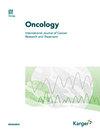悉尼西南部参加早期临床试验的不同文化和语言癌症患者的社会特征。
IF 2.5
3区 医学
Q3 ONCOLOGY
引用次数: 0
摘要
导言 早期临床试验(EPCT)使那些已经用尽标准治疗方法的患者能够获得新型疗法,并在药物开发和研究中发挥着至关重要的作用。文化和语言多样性(CALD)或社会弱势患者参与这些试验的比例明显较低。我们旨在了解悉尼西南部参加 EPCT 的患者的社会和文化人口统计学特征。方法 我们对利物浦医院参加 EPCT 的患者进行了为期 10 年的回顾性调查。CALD患者被定义为在海外出生或首选语言非英语的患者。患者的居住地址被用来计算旅行距离,相对社会经济优势和劣势指数(IRSD和IRSAD)被用来计算和替代社会经济地位(SES)。结果 我们的研究包括 39 个 EPCT 的 233 名患者。91名患者(39%)被确定为CALD。IRSD和IRSAD的中位数分别为941分和944分,与澳大利亚的中位数相比,62.7%-67.4%的患者居住在较为贫困的地区。旅行距离的中位数为 17 公里,只有 12% 的参与者旅行距离超过 50 公里。与非 CALD 患者相比,CALD 患者更有可能居住在社会经济地位较低的地区(OR 3.4,95% CI 1.8 - 6.5,p<0.01),旅行距离中位数也更短(10 对 23 公里)。结论 我们的研究队列中 CALD 患者的比例较低,社会经济地位高于我们对当地人口的预期。此外,CALD 患者的社会经济地位呈下降趋势(IRSD/IRSAD 分数较低)。这项研究提供了新颖的澳大利亚数据,证明了文化多样性或弱势患者在 EPCT 中的代表性不足。今后应努力减少参与障碍,提高临床试验参与的公平性。本文章由计算机程序翻译,如有差异,请以英文原文为准。
Social characteristics of culturally and linguistically diverse cancer patients enrolled in early phase clinical trials in South-Western Sydney.
Introduction Early phase clinical trials (EPCT) enable access to novel therapies for patients who have exhausted standard of care treatment and contribute a crucial role in drug development and research. Culturally and linguistically diverse (CALD) or socially disadvantaged patients have notably lower rates of participation in these trials. We aimed to characterise the social and cultural demographics of patients enrolled on an EPCT in South Western Sydney. Methods We conducted a 10-year retrospective review of patients enrolled on a EPCT at Liverpool Hospital. CALD patients were defined as those born overseas or whose preferred language was other than English. The patient residential address was used to calculate distance travelled and the Index of Relative Socio-economic advantage and disadvantage (IRSD and IRSAD) scores were calculated and used as a surrogate for socioeconomic status (SES). Results Our study included 233 patients across 39 EPCTs. Ninety-one patients (39%) were identified as CALD. The median IRSD and IRSAD scores were 941 and 944 respectively with 62.7% - 67.4% of patients residing in an area with greater disadvantage compared to the median of Australia. The median distance travelled was 17 kilometres with only 12% of participants travelling more than 50 kilometres. CALD patients were more likely to reside in an area of low SES (OR 3.4, 95% CI 1.8 - 6.5, p<0.01) and travelled shorter median distances (10 vs 23 kilometres) when compared to non-CALD patients. Conclusion Our study cohort contained a lower proportion of CALD patients and a higher SES than what we might have expected from our local population. Furthermore, there was a trend toward greater SES disadvantage (lower IRSD/IRSAD scores) for the CALD population. This study provides novel Australian data to support the underrepresentation of culturally diverse or disadvantaged patients on EPCTs. Future efforts should be made to reduce barriers to participation and improve equity in clinical trial participation.
求助全文
通过发布文献求助,成功后即可免费获取论文全文。
去求助
来源期刊

Oncology
医学-肿瘤学
CiteScore
6.00
自引率
2.90%
发文量
76
审稿时长
6-12 weeks
期刊介绍:
Although laboratory and clinical cancer research need to be closely linked, observations at the basic level often remain removed from medical applications. This journal works to accelerate the translation of experimental results into the clinic, and back again into the laboratory for further investigation. The fundamental purpose of this effort is to advance clinically-relevant knowledge of cancer, and improve the outcome of prevention, diagnosis and treatment of malignant disease. The journal publishes significant clinical studies from cancer programs around the world, along with important translational laboratory findings, mini-reviews (invited and submitted) and in-depth discussions of evolving and controversial topics in the oncology arena. A unique feature of the journal is a new section which focuses on rapid peer-review and subsequent publication of short reports of phase 1 and phase 2 clinical cancer trials, with a goal of insuring that high-quality clinical cancer research quickly enters the public domain, regardless of the trial’s ultimate conclusions regarding efficacy or toxicity.
 求助内容:
求助内容: 应助结果提醒方式:
应助结果提醒方式:


